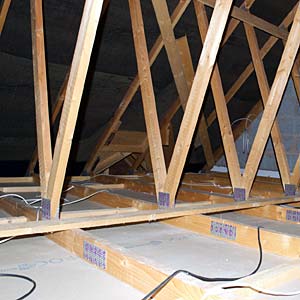Dealing with unwelcome pests in your home can be frustrating, disgusting, and even dangerous, depending on the type of pest. Getting control of a pest problem early is key to minimizing damage and health risks. Understanding common household pests and effective control methods is critical in keeping pests out of your home. This comprehensive guide covers critical information all homeowners should understand. Let’s start!

Identifying Common Household Pests
The first step towards addressing an infestation in your home is properly identifying what kind of pest or pests you are dealing with. Recognizing signs of an infestation and behaviors of common pests aids in quicker response. Common household pests include:
Rodents
Rodents like mice, rats, and squirrels frequently find their way into homes through small openings. They thrive by gnawing and burrowing, causing structural damage, chewing through wires, contaminating surfaces with urine and feces, spreading diseases, and consuming stored food.
Listen for scampering or scratching noises, especially at night. Also, look for small bore holes, nesting debris piles, droppings, smears, strange odors, and nibbled materials.
Insects
Many insects invade homes primarily seeking food and shelter. Watch for trails or groupings of multiple bugs congregating near moisture and food waste.
Cockroaches, drain flies, fungus gnats, phorid flies, fruit flies, stored product pests, and fungus beetles are attracted to damp, rotting organic matter. Others, like bed bugs, fleas, lice, and kissing bugs, feed on human or animal blood. Ants, hornets, and bees trail sweet substances or build nests on properties.
Animals
Certain wild animals, like foxes, hedgehogs, moles, bats, badgers, and birds, may reside in yards, structures, or unsecured trash areas. Animals sometimes cause noise issues or property damage. More concerning is the accumulation of hazardous droppings, contaminated food waste, and parasites tracking inside.
Once the pest type is identified, understanding its habits, behaviors, entry points, breeding sites, risks, and signs of an established infestation guides the best control approach…
Inspecting for Pest Entryways & Harborage Sites
To prevent and control household pests, finding and eliminating environmental factors that attract them and allow ingress is critical. Conduct thorough self-inspections of the interior and perimeter of your home, focusing on these key areas:
Exterior Foundation & Landscaping
- Check for cracks, holes, gaps, loose vent covers, and uncapped chimneys. Seal any openings wider than 1/4 inch.
- Note areas of moisture accumulation near the foundation from drainage issues.
- Confirm vegetation is trimmed back at least 2 feet.
- Identify and remove trash, debris piles, standing water, pet food bowls, neglected gardens, etc.
Kitchen, Bath & Laundry Spaces

- Inspect under and behind appliances and pipes for openings in walls/floors.
- Advise if drains have frequent backups or covered vents allowing sewer gas escapes.
- Watch for excessive moisture from leaks producing mold or attracting pests to breed.
Attics, Crawl Spaces & Basements
- Use lighting and cameras on poles to view dark corners and validate that insulation barriers are intact.
- Document clusters of droppings, nesting materials, larvae casings, egg cases, or the pests themselves.
- Note conducive conditions like exposed food, overly damp subfloor earth, etc.
Implementing methods that make a property less appealing to pests seeking food, water, and shelter prevents infestations. An ounce of exclusion is worth a pound of cure!
Non-Chemical Pest Prevention Tips
Before resorting to chemical pesticides, several non-toxic tactics may effectively control or deter pests. Sanitation and exclusion efforts make properties far less hospitable for many household invaders. DIY and professional pest control should always begin with these foundational prevention measures:
Food Safety & Sanitation
- Store human and pet food in sealed hard containers instead of bags, boxes, or open bowls.
- Freeze, refrigerate, or heat treat items to destroy eggs/larvae.
- Frequently sanitize surfaces and quickly mop up spills to remove feeding and breeding grounds.
- Take out trash and recycle daily. Rinse cans & bottles before recycling.
- Fix dripping faucets and leaks, producing moisture pest drink and breed in.
- Screen vents, floor drains, and cover toilets when not in use.
Physical Exclusion Tips
- Trim back vegetation touching the home’s exterior.
- Screen attic, soffit, foundation, and laundry vents using fine mesh.
- Weatherstrip around doors. Ensure windows have tight seals and screens.
- Caulk cracks greater than 1/16 inch to block access around utility line penetrations.
- Install door sweeps and ramps to seal the gap at the bottom of doors.
- Use expanding foam, concrete, hardware cloth screen, copper mesh, or steel wool to plug more holes.
Making a home fortress hostile to pest survival and ingress goes a long way! However, additional methods are needed when dealing with established infestations…
Professional Pest Management Services
For moderate or severe household pest infiltrations, contacting professional exterminators is advised. Companies like Pest Solutions expertly employ integrated pest management techniques to eliminate current problems and prevent recurrence. Certified technicians have the cutting-edge tools, treatment options, and experience required to conquer infestations of all types.
Successful pest elimination operations begin with a thorough inspection of the property. Technicians search for signs of activity and locate nesting areas, food sources, and structural flaws allowing access. They may utilize specialized equipment like high-resolution cameras, ultrasound detectors, fiber optics, flushing agents, and patient tracking dogs. The extent of the infestation and culprit species influence the prescribed treatment plan, which may include:
- Installing indoor traps or outdoor bait stations
- Applying targeted sprays, dusts, gels or granules
- Fumigating with gases to reach hidden nests
- Using natural pesticides like diatomaceous earth
- Releasing sterile insect technique to disrupt breeding cycles
- Removing guinea, wasps, bees, bats, and bird nests safely
- Sealing up entry points around the structure permanently
Follow-up visits ensure treatments eliminate pests from all life stages to the last egg. Monitoring tools also give early warning if new pests attempt to enter. Having reputable local exterminators tackle pest issues provides reliable results homeowners can count on.
Keeping Pests Out of Your Home Takes Action
Tolerating pest infestations almost always enables worsening destruction, contamination dangers, nuisance issues, and health risks. Early intervention when spotting the first signs prevents small issues from becoming unmanageable nightmares. Homeowners should proactively implement preventative measures and never hesitate to contact professionals when pests sneak in. Utilize these responsible pest management principles and reliable local professionals to keep homes clean, safe, damage-free, and comfortable for your family. At the end of the day, we all want to live in a pest free home.



